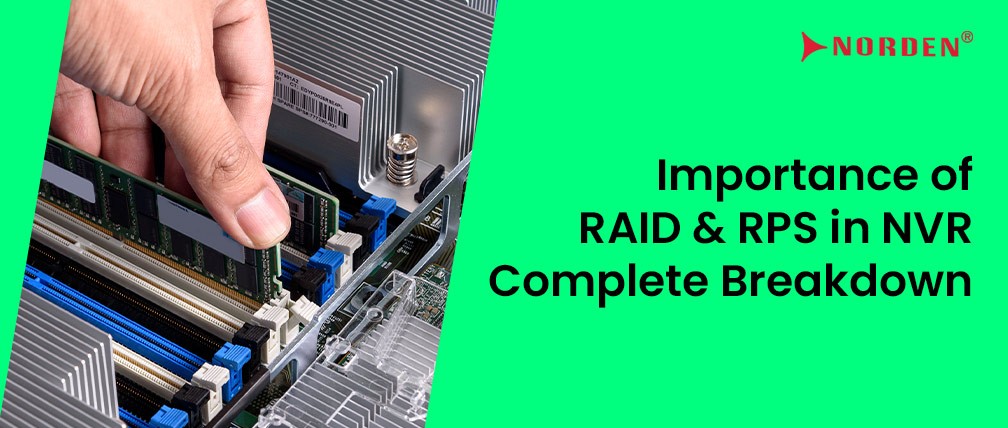Importance of RAID in NVR
Network Video Recorders or NVR are equipped enough to store surveillance footage all by themselves but depending solely on NVR can put the organization in an inherent risk of data loss. Technologies have developed enough to overcome such risk and RAID is the answer to just that. Redundant array of independent drives or disks or RAID is an extensive array of independent disks which help in the storage of data which is done by sharing in between the disks. RAID storage can be utilised to store all necessary video footage without danger of losing the data. The RAID can be available in two forms; either in software or in hardware form.
In order to support the data storage, RAID gives its users different levels of storage access. The levels have been further defined as standard, nested and non-RAID levels.
Lets us look into most common raid storage levels opted exclusively for NVR:
- RAID 1: It focuses on mirroring. It is the first raid level that puts forward redundancy. It also has the smallest capacity in the array which is limited to 1TB. Every single hard disk in RAID 1 is the exact copy, which is the reason for the limited storage capacity. It requires two hard drives but will function with even one.
- RAID 5: RAID 5 is a much more complicated version. It emphasises on block level stripping and distributed parity. The complicated redundancy makes sure to work with at least one hard drive that is properly functioning. It requires a maximum of three drives with 1 TB storage capacity but reduced the total storage capacity to 2TB.
- RAID 6: It is similar to that of RAID 5 and focuses on block level striping and double distributed parity. It has to have at least two drives to function properly. RAID 6 has four hard drives of 1TB each but reduced and the maximum storage capacity is 2TB.
- RAID 10: It possesses the features of striping and mirroring. Just like RAID 1, the capacity is significantly reduced but has improved read or write performance. The configuration of RAID 10 is effectively based on the combination of RAID 0 and RAID 1. It requires at least four drives. The maximum storage capacity is reduced by one-half which reduces the maximum storage capacity to 2TB.
- RAID 50: double block-level striping with parity. It needs a minimum of 6 drives. The 6 TB hard drive will have a configuration of over a total storage capacity of 4TB.
- RAID 60: It requires a minimum of 8 drives and comes with the feature of double block-level striping with double parity. A 8 drive per 1TB hard drive will have a maximum storage of 4TB.
The raid level that you choose for your NVR certainly will depend on the usage and requirement. If you deal with recorded data that is highly important, then it might require you to go for RAID levels which offer you the best configuration. If your data is not that important then a single drive would suffice your need. Using RAID for your NVRs is a plausible option as it is a collection of low-cost drives. Therefore, using RAIDS are highly recommended with users with highly sensitive and information of prime importance. The essential backup with the help of RAID is necessary for the seamless running of your entity.
